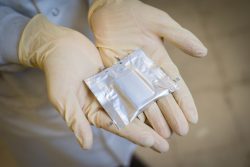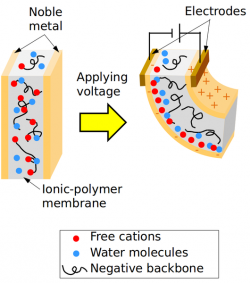Polymer composites are composite materials made by combining two materials, typically a polymeric resin (often vinyl) reinforced with fibres (fibreglass, carbon fibre, Kevlar) or fillers (silica, nickel sulphate, colloidal silver) that together form a material with unique and specific synergistic properties. There have been enormous advances in these composite products in recent decades, and they have revolutionised many industries, including aerospace, marine engineering, construction, automotive, green energy, electronics, optics, sensors, prosthetics, 3D printing and biomedicine.

Polymer coatings
The ability to apply such useful tailored materials to other surfaces is enormously useful, but as with any coating process, achieving strong adhesion is essential. Plasma thermal spraying is one of the best solutions. Using a version of this technique allows you to do much more than spray the material onto a surface. A plasma polymer composite application can both infuse the polymer deep into the substrate (virtually forming a weld rather than a coat), and it can do this while polymerisation, molecular cross-bonding, is taking place in the coating material at the same time. That means the integrity and strength of the surface is significantly enhanced.
Polymer composite materials often begin in a fluid form, but solid strands or powder are also possibilities as polymers are often solvent-resistant. This then melts in the stream from a plasma torch that propels it onto (and into) a suitably prepared surface. The plasma is usually produced by a glow discharge through a low-pressure vapour.

Another useful property of the plasma-generating equipment is its ability to change a surface in useful ways, particularly for making it accept coatings that it might normally repel. For example, many materials are hydrophobic, and hydrophobic surfaces are difficult to paint, let alone bond to other layers, without causing widespread surface destruction in the process. Plasma converts these “low-energy” surfaces into high-energy ones that are substantially more hydrophilic. This clearly assists absorption and bonding with a plasma polymer composite, especially one that is highly branched and cross-linked.
The resulting film can be very thin, yet by selecting the right mix of parameters (monomer flow rate, system pressure, discharge current, substrate temperature and so on), a wide range of surface characteristics can be engineered.
Diverse uses
The range of possible plasma polymer composite materials and applications has yet to be exhausted. A number of interesting uses are detailed at Science Direct. Products known to have used it include fishing rods, baseball bats, the Airbus A350, electrical insulators, thin-film dielectric components, semiconductors, textiles, dairy pasteurisation equipment, medical implants, chemical filters, catalyst materials, racing cars, bicycles, swimming pool construction and cladding panels.
The process is affordable enough to be employed to solve familiar industrial problems, such as adhesion, improved wear, friction reduction and corrosion resistance. At the same time, it is flexible enough to solve sophisticated problems, such as implant rejection and surgical infection. Antimicrobial surfaces have been created by infusing slow-release silver nanoparticles into polymer coatings.
By combining thermal sprays with polymer chemistry, it is possible to solve problems we haven’t yet thought of.
